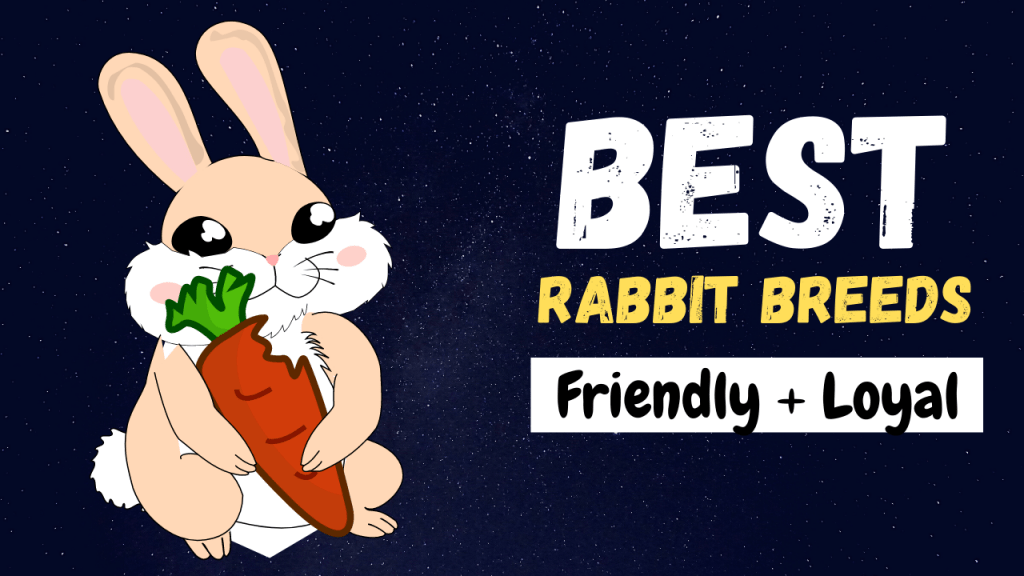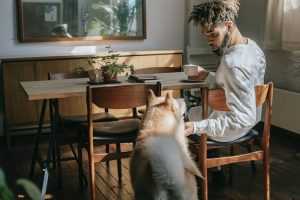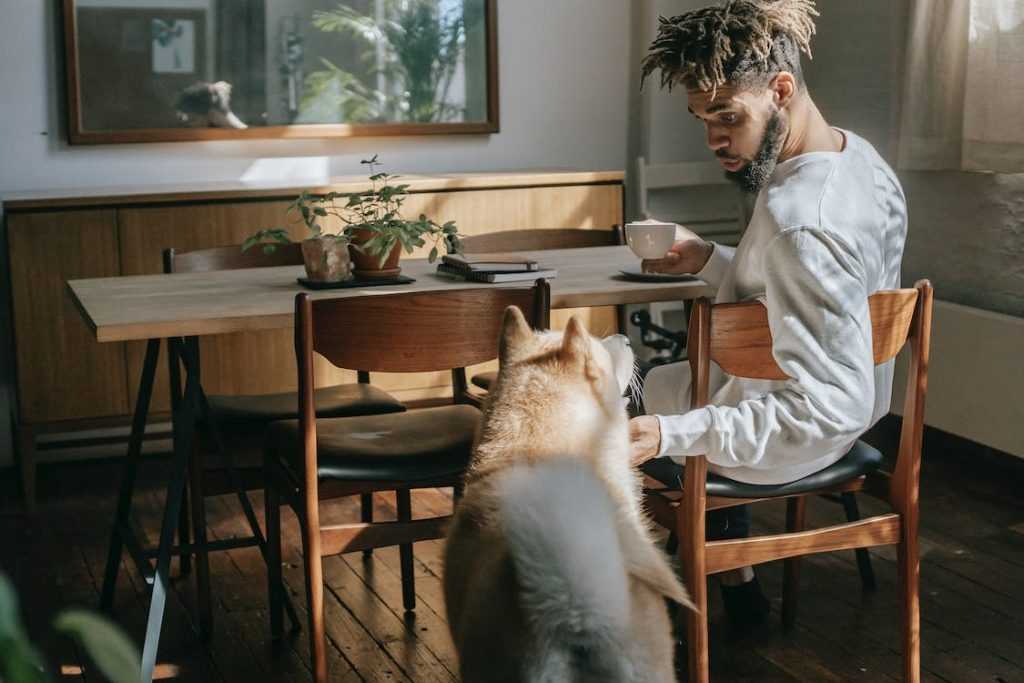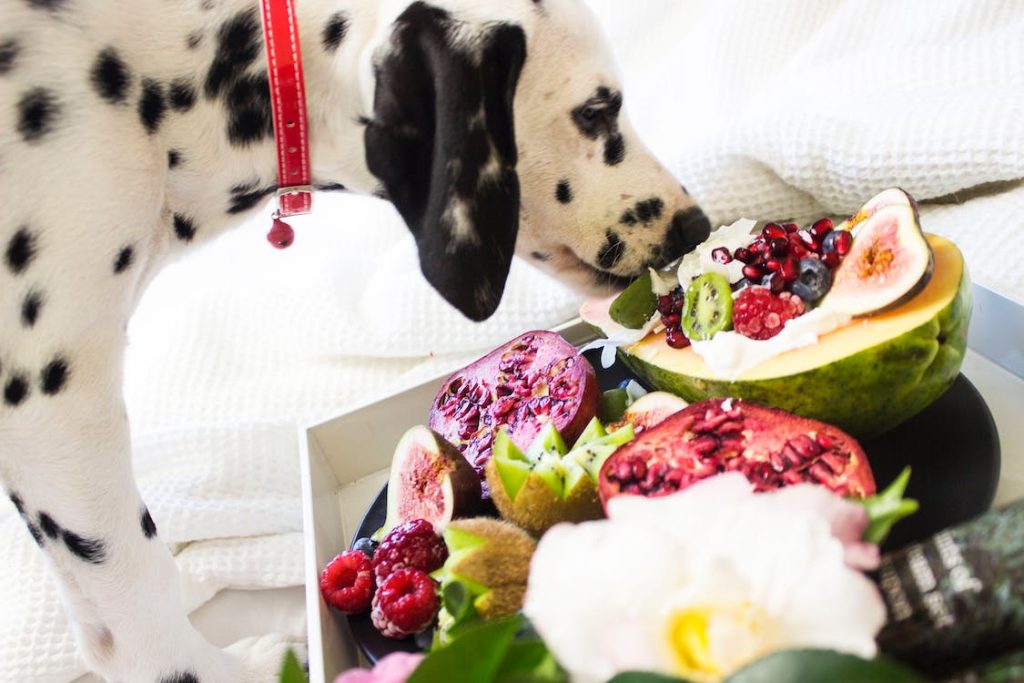
Rabbits are wonderful creatures that can be used as show animals or can be your great companion pets. Several breeds are ranging from the giant rabbits to the mini-sized rabbits. Each breed has its distinctive personality and temperament. Some are very cuddly active and energetic and on the other hand, some are very docile and lazy by nature. Certain breeds need daily care and some don’t need much grooming.
Here is a list of the best rabbit breeds and their characteristics so you can choose the right one for you and your family.
#1
American Rabbits
[box type=”shadow” align=”” class=”” width=””]- Origin: California, 1917
- Weight: approximately 9 to 12 lbs.
- Defining Characteristics: Commercially used for fur and meat, Mandoline body shape, soft and flyback fur.
- Temperament: Calm, gentle and docile
- Life Span: 5 to 8 years.
- Available Colors: White and Deep blue
The American rabbit breed is a very calm, quiet, and docile breed that is developed in 1917 in California. Americans were used commercially for fur and meat in the 1900s but later on it also become a great pet.
It is a medium to large breed that has two color variety; the White American with red eyes and the other having the deepest blue color. They were recognized as a breed in March 1918 by The National Breeders Association(ARBA). Their first name was German Blue Vienna but due to world war 1, this name had been changed to American Blue.
The American breed has a popular mandoline or semi-arch shaped body. The American rabbits have a very attractive soft, silky, flyback fur. Their coat has short hair and a very silky texture. They had been bred commercially for the soft and luxurious fur.
Their diet should consist of pallets, a lot of hay, fresh fruits, and most importantly a lot of freshwaters.
#2
Rex Rabbits
[box type=”shadow” align=”” class=”” width=””]- Origin: France, 1919
- Weight: approximately 7.5 to 10.5 lbs.
- Defining Characteristics: Dense velvety coat due to recessive gene mutation.
- Temperament: Calm, gentle, and playful. Having motherly attributes creates strong bonding.
- Life Span: 5 to 6 years.
- Available Colors: Castor, amber, chinchilla, seal, white, Californian, opal, chocolate, black, lilac, Linux, red, sable, and broken.
Rex rabbit is a domesticated rabbit breed with a plushy smooth and dense fur. The dense, smooth, and lustrous fur is a result of rex gene mutation. They have medium-size sturdy bodies that make delightful companions. They have a slightly broader head and erect ears.
Rex rabbits can bring delight to any family because of their sweet and gentle nature. It can also make a strong bonding with the people of the house. Its velvety lustrous fur and intelligence make it stand among other breeds.
Rex rabbits need less grooming so elderly people and first-time owners can enjoy their company very easily. They can also be suited to families, singles, and young children.
#3
Mini Satin Rabbit
[box type=”shadow” align=”” class=”” width=””]- Origin: United States of America
- Weight: 3 to 4.5 lbs
- Defining Characteristics: Dwarf rabbits with a compact body, thick, silky, and a ‘satin’ textured coat.
- Temperament: Friendly, curious, gentle, and cool nature.
- Life Span: 5 to 8 years
- Available Colors: Red-Eyed-White, opal, Red, Siamese, Chinchilla, black, blue, chocolate, agouti, opal, copper, otter, silver marten, tortoise
Mini Satin Rabbit was originated in the United States of America. Mini Satin rabbits were developed from breeding standard-sized satin with Netherlands or polish Dwarfs. This miniature was popularized due to its size and coat. They are very adorable companions having exquisite hair shell that reflects light forming satin sheen.
Generally, Mini Satin are known for their cool and gentle temperament. They are very friendly, social, and energetic. Mini Satins need a lot of exercise and playtime. People who do not have time can put them in pairs to make them happy.
#4
The Dutch Rabbit
[box type=”shadow” align=”” class=”” width=””]- Origin: Holland, 1850.
- Weight: 3 to 4 pounds
- Defining Characteristics: Distinctive white markings, blue eyes, flyback fur.
- Temperament: Easy going, energetic, friendly, and intelligent.
- Life Span: 8 to 10 years.
- Available Colors: black, steel, blue, gray, chinchilla, chocolate, lilac, and tortoise.
The Dutch rabbit is one of the oldest recognized breeds descended from the Petit barbancons. They are originated in Holland in 1850 and gain the title as Hollander rabbit.
The Dutch rabbit gained its popularity as pets and as show rabbits. It has a small to medium size and a well rounded compact body, rounded head, and glossy flyback fur that is very easy to maintain.
The crown characteristic of the Dutch rabbit is their specific white marking. The marking is identical in various types of Dutch rabbits. The ears and hind legs have black glossy fur whereas the white band runs down from their face making an inverted “V”, to the belly and legs are also white.
The Dutch rabbit has a very friendly, gentle, and social temperament. They love to come out of their cage and roam freely. In an isolated cage with no other partner and human companion, they can easily become bored. Because of low maintenance, they are a great choice for novice and seniors.
#5
Holland Lop
[box type=”shadow” align=”” class=”” width=””]- Origin: Netherlands, 1950
- Weight: 2 to 4 lbs
- Defining Characteristics: Compact body, looped ears, and short rounded nose, dense rollback coat.
- Temperament: Friendly, sweet, and good-natured, very active and energetic.
- Life Span: 7 to 14 years
- Available Colors: Chinchilla, fawn, frosty, Chestnut agouti, sable, chocolate, smoke pearl, tricolor, red, orange, cream, and opal
Holland lop is one of the famous breeds in the United States and the United Kingdom. Mr. Adriann de Cock, of Dutch, created Holland lop from Netherland dwarf and french lop. The Netherlands Governing Rabbit Council recognized the breed in 1964 and ARBA recognized the breed in 1976.
Holland lops are a domesticated breed that has diverse color variety. They have a muscular and compact body. Their head is broad with a crown made up of fur or cartilage at its back. Their temperament is friendly and energetic.
They are very active partners that need only basic grooming. Their crown characteristic is their looped ears and short rounded noses that differentiates them from other breeds.
Their diet should consist of 70% of good hay for avoiding overgrown teeth. Pallets, fresh vegetables, leafy greens are also good for them. To avoid dehydration, plenty of water should be given.
#6
Checkered Giant Rabbit
[box type=”shadow” align=”” class=”” width=””]- Origin: Germany or France, 1904
- Weight: 11 to 13 lbs
- Defining Characteristics: Large breed, soft fur with a distinctive marking on a white coat
- Temperament: Calm, Playful, energetic
- Life Span: 5 to 6 years
- Available Colors: only White coat with either blue or black markings
The checkered Giant rabbit is considered as one of the largest breeds. Their country of origin is disputed. They are thought to be originated in France or Germany. Mr. Otto Reinhardt of Reinfalz, Germany in 1904, developed Checkered Giant by breeding the checkered eat German Spotted rabbits and Black Flemish Giant.
It can be used as a show rabbit or a wonderful pet. The checkered Giant rabbit breed was accepted by the American Rabbit Breeder Association in 1919. They were given the title “the rabbit beautiful” by ARBA in 2019.
These giant rabbits have special marks on their body that is either blue or black. Thay has a strong muscular but slender body shape.
The Checkered Giant rabbit is an excellent companion and an indoor pet. They do not need much human attention and can live well in pairs.
They are very active and energetic but can be aggressive sometimes if not properly exercised.
#7
Netherland Dwarf Rabbits
[box type=”shadow” align=”” class=”” width=””]- Origin: Netherland, 20th century
- Weight: almost 1.5 to 2.5 pounds
- Defining Characteristics: Very small sized dwarfs, broad head, short and smooth fur
- Temperament: Friendly, sweet, and gentle, not much cuddly
- Life Span: 10 to 12 years
- Available Colors: Cinnamon, Lynx, hot hot, Chinchilla, Ruby Eyed White, Blue Eyed White, Black, Fawn, Himalayan, Lilac Other, Blue, Mantle, Chocolate, Lilac, Red, Broken, Opal, Butterfly, Siamese Smoke, Tortoiseshell, Agouti, Red Agouti Seal point, Tan, Blue Point, Chocolate Point, Squirrel, Marten Smoke, Herlequin, Black Otter, and Chocolate Otter.
It is considered as the smallest breed of rabbits. They are developed by breeding polish rabbits and wild rabbits together in the 20th century. In 1950, the British Rabbits Council BRC accepted this breed while American Rabbit Association accepted this breed in 1969.
The Netherland Dwarf rabbits are the smallest rabbits with a compact body and fragile bones. Their head is large as compared to their body and having large eyes and about 2.5 inches erect ears.
The Netherland dwarfs have cool, friendly, and gentle temperaments. They can tie strong bonds with people. They are easy to litter box train. Tiny dwarfs can be stressed out easily if the proper time to play is not given to them.
Their food consists of a normal diet like any breed, that consists of hay, pallets, and freshwater. pallets should be given according to their weight and 1 cup of vegetables can be given to a rabbit of about 2 to 2.5 weight.
#8
Polish Rabbits
[box type=”shadow” align=”” class=”” width=””]- Origin: England, 1800
- Weight: Not more than 3.5 lbs
- Defining Characteristics: Short head with wide cheeks and big eyes. Very friendly nature
- Temperament: Calm, Docile, Affectionate, Cuddling
- Life Span: 5 to 6 years
- Available Colors: Ruby-Eyed White, Chocolate, Black, Blue-Eyed White, Blue, and Broken pattern
The polish rabbit was originated by breeding Dutch and Himalian rabbits, in England in the early 1800s. ARBA recognized Polish rabbits as a new breed in 1912.
The Polish rabbits have a comparably short head but their cheeks are fluffy. Their ears are short and pointed. Polish rabbits contain dwarf gene weighing not more than 3.5 pounds. The coat is easy to maintain soft and flyback.
The Polish rabbit is known for its affectionate and loving temperament. They love to be picked up and pat. Their docile and affectionate nature makes them great choices for families and singles.
They have the same diet pattern. Their diet should consist of 70% hay, pallets, leafy greens, and vegetables. They should be checked for common health problems like overgrown teeth, flystrike, and ear mites.
#9
The Mini Rex
[box type=”shadow” align=”” class=”” width=””]- Origin: Florida, 20th century
- Weight: 4.5 to 5 pounds
- Defining Characteristics: Luxurious furball coat, friendly temperament
- Temperament: friendly, calm, and docile
- Life Span: up to 10 years
- Available Colors: Castor, white, lilac, black, lynx, chocolate, chinchilla, red, seal, silver marten, smoke pearls, opal, otter, red, tortoise, and many more.
Monna R. Berryhill, of Texas, bred a Rex black male with a Lynx red female and got a litter having seven miniatures with the features of the Rex rabbit. ARBA recognized this breed in 1988.
This tiny creature looks like a furball. It has a compact small but well-proportioned and muscular body. The ears are 3.5 inches long.
The Mini Rex got its popularity due to dense fur that remains straight and upright all the time. This fur has a velvety touch and it is very smooth and spring-like and about ⅝ inches long. Their coat is plush and luxurious having spots on the nose, ears, eyes, and tail.
They are calm, gentle, and docile. They are not easy to litter box train. Mini Rex is very playful and energetic.
#10
American Fuzzy Lop
[box type=”shadow” align=”” class=”” width=””]- Origin: United States of America
- Weight: 3 to 4 pounds
- Defining Characteristics: Dwarf rabbit, cool temperament, looped ears, Wool coat
- Temperament: Funny personality, friendly, Affectionate, social
- Life Span: 5 to 8 years
- Available Colors: Pure white, Agouti, Lynx, Squirrel, Opal, Chestnut, and Chinchilla with a combination of white color
The American fuzzy lop is developed when the Holland Lop was bred with French Angoras and a litter similar to Holland Lop with long fur and the compact body was produced. This new breed was realized as recessive by Patty Greene-Karl.
The American Fuzzy Lop is a dwarf-sized small bunny with a thick and compact body. Their ears are not erect. Rather they are tinted, fuzzy, medium-long, and flopped.
Their fur resembles French Angora. It is 2 inches long and made of wool which can be spun into a yarn. Their beautiful coat has different color markings on the nose, ears, feet, and tail.
#11
Lion Head Rabbit
[box type=”shadow” align=”” class=”” width=””]- Origin: France and Belgium
- Weight: 2.5 to 3.75 pounds
- Defining Characteristics: Fancy breed, Bold head, and 2 inches wool mane surrounding the head forming a full circle
- Temperament: Well mannered, trainable and friendly, and playful
- Life Span: 8 to 10 years
- Available Colors: black, blue, chocolate, tortoise, blue point, blue-eyed white, ruby-eyed white, smoke pearl, chestnut agouti, seal, silver marten, siamese sable, pointed white, and sable point.
The lion head rabbit is a well mannered, domestic breed originated in France and Belgium. They were developed by breeding miniature swiss fox and Netherland dwarfs. Due to the gene mutation, the fur appears around the head making a circle. This fancy breed was accepted by ARBA in 2013.
The lion head has a compact and well-rounded body and a unique kind of fur of about 2 inches, surrounding the head area are known as “Mane”. The Mane is wooly and dense. They either have a single or double mane.
They are friendly, well mannered, energetic, and good-natured bunnies. They are very intelligent and playful and can be trainable. if they get frightened they will show aggression. They also win the title of being ” lap bunnies”.
The lion head usually needs more care and grooming. Their nutrition relies on common rabbit food. Due to their small size, they become the best apartment dwellers.
#12
Californian Rabbits
[box type=”shadow” align=”” class=”” width=””]- Origin: California, 1923
- Weight: 8 to 10.5 lb
- Defining Characteristics: Pink eyes, white coat, and black or near black markings
- Temperament: Mild temperament, Gentle, and affectionate
- Life Span: 5 to 10 years
- Available Colors: White color with markings on ears, nose, tail, and feet
George west of Californian developed this breed by a crossing between a Himalayan and a Chinchilla rabbits in 1923. It was recognized by ARBA in 1939.
It is considered as a large rabbit breed weighing about 8 to 10.5 pounds. This breed is a super friendly, energetic, and outdoor lover.
They have a compact and muscular body with broad and upright ears. Their fur is short while the coat is coarse and not silky to touch. Unlike others, they shed more in spring and need more grooming at least twice a day in spring.
The distinct characteristic of the Californian rabbit is the unique marking on the white coat. The black or nearer black marking is found at their ears, nose feet, and tail. They also have pink eyes.







